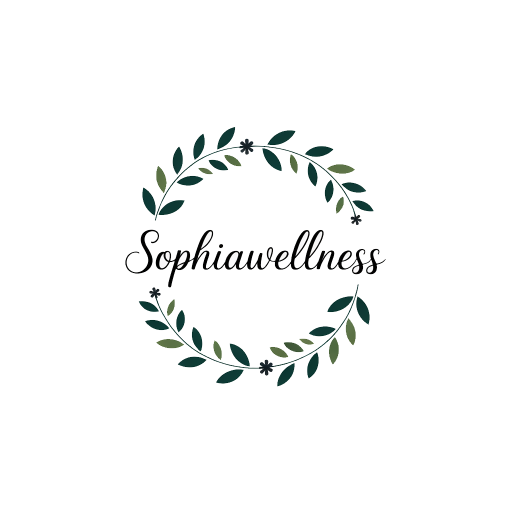Breathe Your Way to a Calm Mind With These Techniques
To breathe your way to a calm mind, start using controlled breathing techniques. Engaging your diaphragm helps reduce anxiety and enhances lung function, which boosts your cognitive clarity. You’ll find that deep breathing lowers blood pressure and cortisol levels, promoting relaxation. Practical exercises like box breathing or the 4-7-8 technique can easily fit into your day. Ready to explore more ways to cultivate this sense of calm? There’s plenty to uncover!
Key Takeaways
- Controlled breathing techniques activate the parasympathetic response, promoting relaxation and reducing anxiety effectively.
- Diaphragmatic breathing enhances lung capacity while lowering stress levels, contributing to a calm mind.
- Box breathing improves focus with structured inhalation and exhalation, helping to center thoughts and emotions.
- Regular practice of the 4-7-8 technique aids in anxiety management, fostering tranquility through controlled breath patterns.
- Combining breathing exercises with mindfulness amplifies their calming effects, enhancing overall well-being and emotional regulation.
The Science Behind Breathing Techniques
While you mightn’t think about it, the science behind breathing techniques plays an essential role in your overall well-being. Effective breathing involves both inspiration and expiration, utilizing your diaphragm and intercostal muscles to expand your chest cavity. When you engage in controlled breathing during meditation, you actively influence your nervous system. Deep breathing activates the parasympathetic response, promoting relaxation and reducing anxiety. This process enhances lung function, ensuring efficient oxygen exchange. Additionally, increased oxygen flow to the brain during deep breathing enhances cognitive function, allowing for better decision-making in stressful situations. Studies show that mindfulness practices can further amplify the benefits of these breathing techniques, leading to a more profound sense of calm.
Additionally, the brain’s respiratory center regulates your breathing based on blood oxygen levels, allowing for voluntary control. By mastering various techniques like diaphragmatic breathing and box breathing, you can optimize your physical and emotional state, ultimately paving the way for a calmer, more focused mind.
Psychological Benefits of Controlled Breathing
Have you ever considered how controlled breathing can transform your mental state? Engaging in structured breathing techniques can greatly reduce anxiety and manage symptoms of depression, fostering emotional stability. By enhancing your ability to regulate emotions, you’ll find it easier to navigate daily stressors and improve focus. These practices not only promote relaxation but also increase alertness and cognitive clarity, helping you maintain a calm yet sharp mind. Regular breathwork enhances your overall psychological well-being, leading to improved mood and reduced irritability. In the long run, committing to these techniques builds resilience against stress, empowering you to handle challenges with greater ease. Studies have shown that slow breathing techniques can lead to significant improvements in heart rate variability and overall mental health. Additionally, incorporating mindfulness meditation into your routine can further amplify these benefits, fostering a deeper sense of peace and presence. Embrace controlled breathing, and release a more balanced, focused, and resilient version of yourself.
Physiological Changes From Deep Breathing
Deep breathing techniques bring about significant physiological changes that can positively impact your overall health. By stimulating parasympathetic activity, you activate a calm state and reduce sympathetic nervous system responses that trigger stress. This practice enhances heart rate variability, indicating improved cardiovascular resilience. As you engage in diaphragmatic breathing, you increase tidal volume and optimize lung capacity, allowing for better oxygenation and gas exchange. Additionally, deep breathing lowers blood pressure and stabilizes heart rate, promoting cardiovascular efficiency. Enhanced blood flow dynamics support nutrient delivery to your muscles, while reducing cortisol levels helps mitigate stress. Furthermore, diaphragmatic breathing reverses sympathetic over-arousal, providing a crucial method for managing anxiety and stress levels effectively. Regular practice of these techniques can lead to long-term health benefits that enhance your overall well-being.
Practical Breathing Exercises for Everyday Use
Start with diaphragmatic breathing to engage your diaphragm and enhance lung capacity. This technique is particularly beneficial for individuals with COPD and can significantly reduce stress levels, as it promotes deep breathing that calms the nervous system. Try pursed lip breathing during physical activities to keep your airways open and reduce your breathing rate. Box breathing is excellent for focus; inhale, hold, and exhale for equal counts. If anxiety strikes, practice the 4-7-8 technique: inhale for four counts, hold for seven, and exhale for eight. Incorporate alternate nostril breathing to balance your energy and calm your mind. Finally, humming bee breathing can help alleviate stress anytime. Aim to practice these techniques regularly, whether in the morning, evening, or during moments of stress, to master your breathing and promote tranquility.
Training Guidelines for Effective Breathing Practices
While many people underestimate the importance of structured breathing practices, integrating effective training guidelines can greatly enhance your experience.
Start by cultivating awareness of your breath; it’s essential for reducing stress. Begin with basic deep breathing—slow inhales and longer exhales signal relaxation. Establish a consistent rhythm, like inhaling for 2-4 seconds and exhaling for 4-6 seconds.
Combine your practice with mindfulness for greater impact. Utilize techniques such as diaphragmatic and paced breathing, or try the 4-4-8 method for stress relief. Consider using breathing apps to guide your sessions. Additionally, exploring breathing techniques can further support your journey towards calmness.
Commit to regular practice, ideally once or twice daily, and adjust your techniques based on feedback and personal progress. Consistency is key to mastering these transformative skills.
Frequently Asked Questions
How Quickly Can I Expect Results From Breathing Techniques?
You might feel immediate relief with techniques like deep breathing, yet consistent practice opens up deeper benefits over time. While quick results are enticing, mastery comes from dedication, ensuring stress management becomes a lasting skill.
Are There Any Risks Associated With Breathing Exercises?
Yes, there are risks with breathing exercises. You might experience dizziness, tingling, or irregular heartbeats. Always guarantee proper technique, consult a doctor if you have health concerns, and monitor how your body responds during practice.
Can Breathing Techniques Improve Sleep Quality?
Yes, breathing techniques can greatly improve your sleep quality. By reducing stress and promoting relaxation, these methods help you fall asleep faster and enjoy longer, more restful nights. Regular practice enhances their effectiveness over time.
How Do I Integrate Breathing Exercises Into My Daily Routine?
To integrate breathing exercises into your daily routine, schedule specific times for practice. Start small, experiment with various techniques, and stay mindful to enhance your focus and consistency, ultimately reaping long-term benefits for your well-being.
Are There Age Restrictions for Practicing Breathing Techniques?
There aren’t strict age restrictions for breathing techniques; children, teens, and adults can all benefit. While young kids need guidance, teens often practice independently. Mastering these techniques can enhance stress management for everyone.
References
- https://www.frontiersin.org/journals/human-neuroscience/articles/10.3389/fnhum.2018.00353/full
- https://mhs.milfordk12.org/ourpages/auto/2020/1/15/12784324316041332238/294751235.pdf
- https://www.psychologytoday.com/us/blog/feeling-it/202406/yes-breathing-for-mental-health-is-legit
- https://www.178wing.ang.af.mil/Portals/69/documents/afh33-337.pdf?ver=2016-12-15-101008-313
- https://med.stanford.edu/news/all-news/2017/03/study-discovers-how-slow-breathing-induces-tranquility.html
- https://www.unm.edu/~lkravitz/Article folder/Breathing.html
- https://cymbiotika.com/blogs/health-hub/how-does-deep-breathing-help-you-relax-exploring-the-science-behind-breath-and-calm
- https://www.heart.org/en/news/2023/07/07/its-not-just-inspiration-careful-breathing-can-help-your-health
- https://www.uhhospitals.org/blog/articles/2024/02/breathe-your-way-to-better-health-and-less-stress
- https://pmc.ncbi.nlm.nih.gov/articles/PMC9873947/





